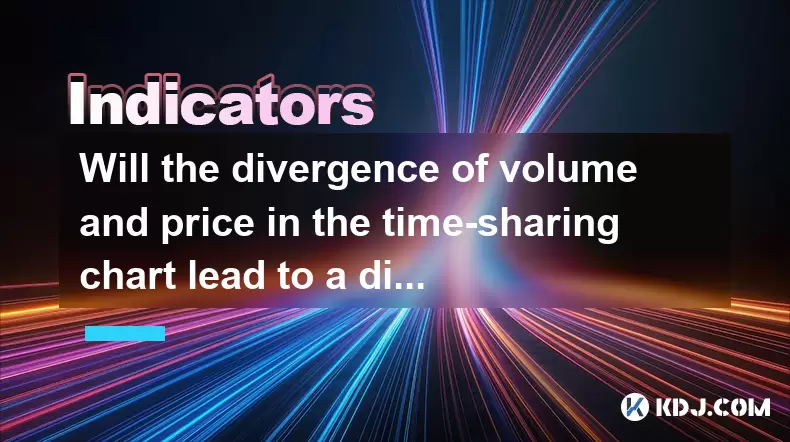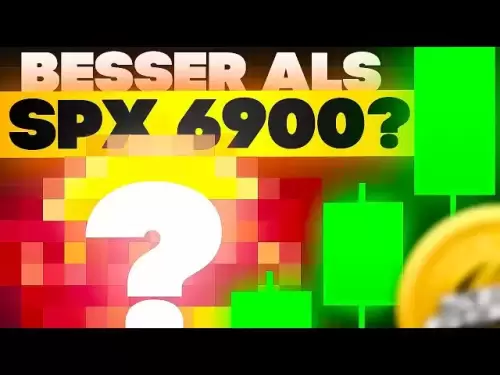-
 Bitcoin
Bitcoin $108,848.6733
0.48% -
 Ethereum
Ethereum $2,650.4108
3.28% -
 Tether USDt
Tether USDt $1.0000
0.00% -
 XRP
XRP $2.3770
4.09% -
 BNB
BNB $662.7961
0.67% -
 Solana
Solana $154.0288
2.41% -
 USDC
USDC $0.9999
-0.01% -
 TRON
TRON $0.2877
0.44% -
 Dogecoin
Dogecoin $0.1728
2.01% -
 Cardano
Cardano $0.6087
4.71% -
 Hyperliquid
Hyperliquid $39.0653
3.31% -
 Sui
Sui $2.9549
2.70% -
 Bitcoin Cash
Bitcoin Cash $506.5404
0.68% -
 Chainlink
Chainlink $13.9918
3.85% -
 Stellar
Stellar $0.2926
15.31% -
 UNUS SED LEO
UNUS SED LEO $9.0547
-0.25% -
 Avalanche
Avalanche $18.5380
2.95% -
 Hedera
Hedera $0.1687
5.02% -
 Shiba Inu
Shiba Inu $0.0...01203
1.93% -
 Toncoin
Toncoin $2.8229
2.41% -
 Litecoin
Litecoin $88.3562
2.27% -
 Monero
Monero $318.5282
1.46% -
 Polkadot
Polkadot $3.5233
4.53% -
 Dai
Dai $1.0001
0.00% -
 Ethena USDe
Ethena USDe $1.0009
0.06% -
 Uniswap
Uniswap $8.1560
8.38% -
 Bitget Token
Bitget Token $4.3553
1.56% -
 Aave
Aave $297.6786
4.28% -
 Pepe
Pepe $0.0...01023
2.74% -
 Pi
Pi $0.4650
1.98%
Will the divergence of volume and price in the time-sharing chart lead to a dive in the last half hour of the trading?
2025/06/29 20:35

Understanding Volume and Price Divergence in Cryptocurrency Trading
In the world of cryptocurrency trading, one of the most commonly analyzed metrics is the relationship between price movement and trading volume. When these two indicators move in opposite directions, it’s referred to as a volume-price divergence. This phenomenon often raises concerns among traders, especially when observed during specific time frames such as the last half hour of a trading session.
A classic example of this divergence occurs when the price of a cryptocurrency asset rises while its trading volume declines. Conversely, the price might fall even as volume increases. These patterns can be visualized clearly on a time-sharing chart, which plots both price and volume across a defined period. Traders use these charts to identify potential trend reversals or continuations.
How Time-Sharing Charts Reflect Market Sentiment
Time-sharing charts are essential tools for short-term traders who rely on intraday analysis. These charts display candlestick data alongside volume bars, allowing traders to compare how much an asset has moved in price versus how many transactions occurred during that movement.
When analyzing the last 30 minutes of a trading day, traders often look for signs of manipulation or sudden shifts in sentiment. For instance, if there's a sharp drop in volume while the price continues to rise, it could signal that fewer participants are willing to buy at higher levels. This is typically interpreted as a bearish sign, suggesting that the rally may not be sustainable.
Conversely, if the price drops but volume surges, it may indicate panic selling or aggressive shorting. In either case, the divergence itself doesn’t guarantee a crash, but it does serve as a warning signal that market conditions may be changing rapidly.
What Happens During the Final Half Hour of Trading?
The final 30 minutes of a trading session are often characterized by increased volatility and strategic order placements from institutional players. Some traders attempt to close their positions before the end of the session, while others may try to manipulate the closing price for various reasons.
During this period, a divergence between volume and price can become more pronounced. For example, you might observe a rising price with declining volume, suggesting that only a few large orders are pushing the price upward without broad market support. Alternatively, a falling price accompanied by high volume might point to a wave of sell-offs triggered by stop-loss orders or algorithmic trading bots.
It’s important to note that while these patterns can hint at a potential dip or surge, they are not foolproof indicators. Other factors—such as macroeconomic news, exchange announcements, or whale movements—can also influence price action significantly.
Analyzing Historical Data for Patterns
To better understand whether volume-price divergence in the last half hour leads to a dive, it helps to examine historical data. Many experienced traders backtest their strategies using historical charts to see how assets have behaved under similar conditions.
For example, consider a scenario where Bitcoin’s price rises steadily throughout the day, but in the last 30 minutes, the volume drops sharply while the price continues climbing. If this pattern repeats multiple times over several days or weeks and is followed by a price correction shortly afterward, it may suggest a correlation.
However, it’s crucial to avoid drawing conclusions based solely on a few occurrences. The cryptocurrency market is highly volatile and influenced by numerous unpredictable variables. Therefore, relying solely on volume and price divergence without incorporating other technical indicators (like RSI, MACD, or Bollinger Bands) can lead to misleading interpretations.
Practical Steps to Monitor Divergence in Real-Time
If you’re actively trading cryptocurrencies and want to monitor for potential price dives linked to volume-price divergence in the last 30 minutes, follow these steps:
- Open a reliable trading platform that provides real-time charts with volume overlays.
- Select a time frame that includes the last 24 hours or the current trading session.
- Enable candlestick charts and ensure volume bars are visible beneath the price chart.
- Observe how price and volume interact in the final 30 minutes of each trading cycle.
- Use drawing tools to mark divergences manually or set up alerts through your trading software.
- Cross-reference findings with on-chain data or social media sentiment analysis for additional context.
By consistently tracking these elements, you’ll develop a better sense of when volume and price discrepancies might precede a significant price movement.
FAQs Related to Volume-Price Divergence and Price Dives
Q: Can volume-price divergence occur without any significant price change?
Yes, divergence can occur even when the price remains relatively flat. This usually indicates a lack of strong buying or selling pressure, signaling possible consolidation or indecision in the market.
Q: Does divergence always predict a reversal?
No, divergence is not a guaranteed predictor of a reversal. It simply suggests that the current trend may be weakening. Other confirming signals should be used in conjunction with divergence for more reliable decision-making.
Q: Are certain cryptocurrencies more prone to volume-price divergence than others?
Less liquid or lower-cap cryptocurrencies tend to show more frequent and exaggerated divergences due to lower trading volumes and increased susceptibility to manipulation.
Q: How can I differentiate between normal fluctuations and meaningful divergence?
Focus on the duration and consistency of the divergence. A single candle showing divergence may not be significant, but repeated patterns across multiple candles increase the likelihood of a meaningful trend shift.
부인 성명:info@kdj.com
제공된 정보는 거래 조언이 아닙니다. kdj.com은 이 기사에 제공된 정보를 기반으로 이루어진 투자에 대해 어떠한 책임도 지지 않습니다. 암호화폐는 변동성이 매우 높으므로 철저한 조사 후 신중하게 투자하는 것이 좋습니다!
본 웹사이트에 사용된 내용이 귀하의 저작권을 침해한다고 판단되는 경우, 즉시 당사(info@kdj.com)로 연락주시면 즉시 삭제하도록 하겠습니다.
- Nexbridge, Nexplace 및 Bitcoin Ecosystem : 새로운 금융 개척지 구축
- 2025-07-09 23:10:13
- MEXC LaunchPad & Pump Token : 40% 할인을 받습니까?
- 2025-07-09 22:50:12
- 무역 시스템 혁명 : XDC 및 팩스 종료가 금융을 재구성하는 방법
- 2025-07-09 23:10:13
- Ripple, Clarity Act 및 XRP 사례 : 암호화 규제에 대한 뉴욕 분
- 2025-07-09 23:50:12
- Rs 50 코인이 없습니까? 델리 HC는 왜 인도가 지폐를 선호하는지 듣습니다
- 2025-07-09 23:15:11
- Rs 50 코인이 없습니까? 델리 HC는 왜 지폐가 최고를 지배하는지 들었습니다
- 2025-07-09 23:50:12
관련 지식

How to trade Dogecoin based on funding rates and open interest
2025-07-07 02:49:34
<h3>Understanding Funding Rates in Dogecoin Trading</h3><p>Funding rates are periodic payments made to either long or short traders ...

What is the 'God Mode' indicator for Dogecoin
2025-07-07 16:42:48
<h3>Understanding the 'God Mode' Indicator</h3><p>The 'God Mode' indicator is a term that has emerged within cryptocurrency trading ...

Using Gann Fans on the Dogecoin price chart
2025-07-07 21:43:10
<h3>Understanding Gann Fans and Their Relevance in Cryptocurrency Trading</h3><p>Gann Fans are a technical analysis tool developed b...

How to spot manipulation on the Dogecoin chart
2025-07-06 12:35:49
<h3>Understanding the Basics of Chart Manipulation</h3><p>Chart manipulation in the cryptocurrency space, particularly with Dogecoin...

Dogecoin market structure break explained
2025-07-07 02:51:32
<h3>Understanding the Dogecoin Market Structure</h3><p>Dogecoin, initially created as a meme-based cryptocurrency, has evolved into ...

How to backtest a Dogecoin moving average strategy
2025-07-08 04:50:05
<h3>What is a Moving Average Strategy in Cryptocurrency Trading?</h3><p>A moving average strategy is one of the most commonly used t...

How to trade Dogecoin based on funding rates and open interest
2025-07-07 02:49:34
<h3>Understanding Funding Rates in Dogecoin Trading</h3><p>Funding rates are periodic payments made to either long or short traders ...

What is the 'God Mode' indicator for Dogecoin
2025-07-07 16:42:48
<h3>Understanding the 'God Mode' Indicator</h3><p>The 'God Mode' indicator is a term that has emerged within cryptocurrency trading ...

Using Gann Fans on the Dogecoin price chart
2025-07-07 21:43:10
<h3>Understanding Gann Fans and Their Relevance in Cryptocurrency Trading</h3><p>Gann Fans are a technical analysis tool developed b...

How to spot manipulation on the Dogecoin chart
2025-07-06 12:35:49
<h3>Understanding the Basics of Chart Manipulation</h3><p>Chart manipulation in the cryptocurrency space, particularly with Dogecoin...

Dogecoin market structure break explained
2025-07-07 02:51:32
<h3>Understanding the Dogecoin Market Structure</h3><p>Dogecoin, initially created as a meme-based cryptocurrency, has evolved into ...

How to backtest a Dogecoin moving average strategy
2025-07-08 04:50:05
<h3>What is a Moving Average Strategy in Cryptocurrency Trading?</h3><p>A moving average strategy is one of the most commonly used t...
모든 기사 보기

























































































